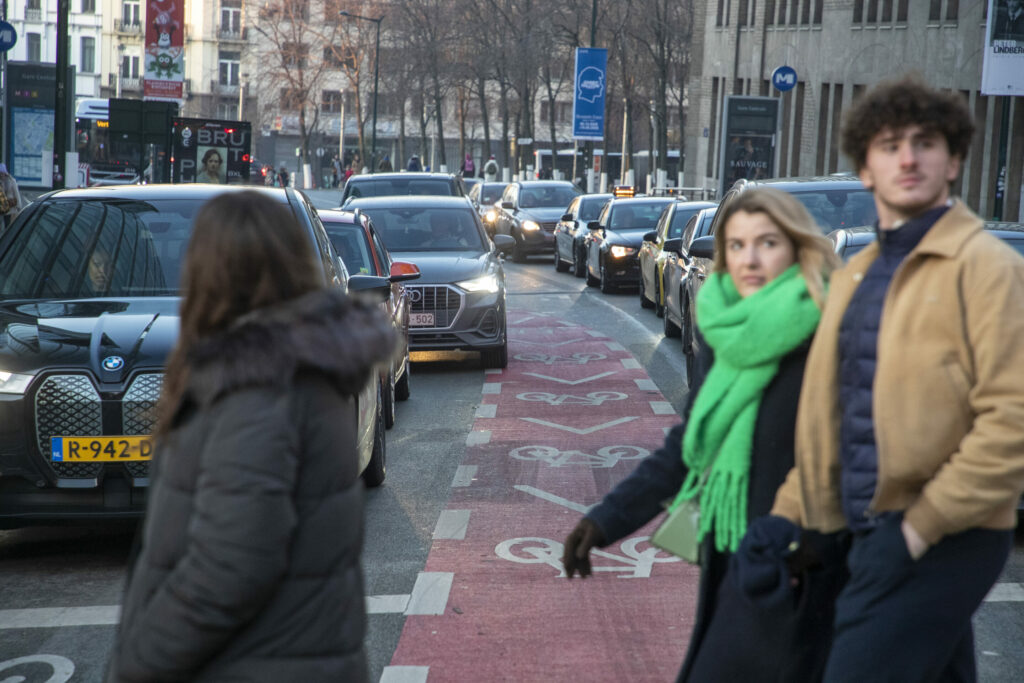While the car remains the preferred mode of transport for Belgian commuters, a report by the Belgian statistical office Statbel on Thursday highlights significant regional and gender differences in commuting choices.
In 2023, 65% of Belgian commuters used a car to get to work. Cycling and public transport (bus, train, metro or tram) were the next most popular choices with 17% and 15% of commuters choosing them respectively. Only 4% of commuters were found to have 4% walked to work.
However, Statbel found that these numbers change significantly from region to region. In Brussels, 45% of commuters travelled to work with public transport, compared to 11% in both Flanders and Wallonia.
A big, but perhaps unsurprising difference between Flanders and Wallonia is the proportion of commuters that cycle to work. Opting for a bike ride is common in Flanders with 23% of commuters getting to work in this way, while in Wallonia it is rather rare option chosen by only 3% of commuters. In Brussels, 15% of commuters cycle to work.
Men and women commute differently
Men and women were also found to not get to work in the same way. In all regions of Belgium, women seem to favour cars less than men. This is especially true in Brussels, where 39% of men drive to work compared with only 24% of women. In Flanders, the proportion of women who travel to work by car is 13% lower than the proportion of men, while in Wallonia, the difference is of 7%.
Instead, women commuters in Brussels tend to opt for public transport – 55% of women use it for their commute compared with 37% of men. In the other regions, women also use public transport more than men, although the differences are not as marked as in Brussels.
While a quarter of women cycle to work, in Flanders, the proportion of men is slightly lower (22%). The situation is reversed in Brussels where the proportion of men that cycle to work is higher than that of women (17% compared with 13%).
When asked about factors that may explain these gender differences, Statbel statistician in the Labour Force team Astrid Depickere said "One of the main factors is probably that men and women work in quite different sectors, in different occupations and often with very different working patterns (part-time work, teleworking, etc.), which makes it difficult to say anything about the effect of gender as such."
Depickere emphasised that various job and employer characteristics can influence commuting habits and are closely tied to gender. "For example, some occupations with a higher proportion of men offer easier access to a company car or are associated with higher salaries, while in other occupations with a higher proportion of women, it may be more common for public transport costs to be covered," she explained.
In 2023, HR services company SD Worx found that 14.6% of Belgian employees in the private sector received a company car as part of their pay package. Mobility benefits, such as a public transport subscription, are also popular perks among Belgian employees. By the end of 2023, a study by HR company Acerta found that 16.65% of workers received a bicycle allowance.
"The accessibility of both home and work, the availability of public transport, the length of the journey, etc., can also have an impact on travel habits," added Depickere.

